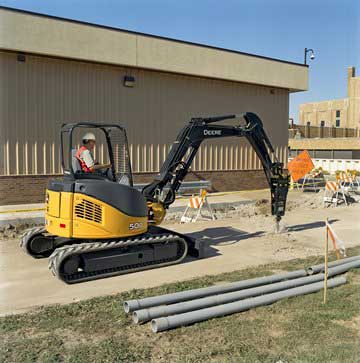Where Should Contractors Start on Emissions Compliance?
 John Deere has the answers in its newest monthly series which offers tips for emissions-conscious contractors. With the California Air Resource Board (CARB) regulations in full effect and Tier 4 Interim engine emissions right around the corner, it’s a good time to take a look at your fleet’s emissions and see where you can improve.
John Deere has the answers in its newest monthly series which offers tips for emissions-conscious contractors. With the California Air Resource Board (CARB) regulations in full effect and Tier 4 Interim engine emissions right around the corner, it’s a good time to take a look at your fleet’s emissions and see where you can improve.
We’re now in the Tier 3 and Interim Tier 4 (IT4) period, which requires a significant reduction in PM and NOx emissions. Interim Tier 4 standards are based on timetables determined by the horsepower rating of the engine. Final Tier 4 standards begin phasing-in during 2013.
So what should you do first?
See your local dealer for an assessment, which will help you determine local and/or state emission requirements for your existing equipment or fleet and what strategies, such as repower, retrofit or repurchasing (buying newer iron), might be right for your particular location, equipment and applications.
“Make sure your dealer has a designated IT4 focus person responsible for spreading IT4 expertise across the dealership organization,” says Joe Mastanduno, product marketing manager for engines at John Deere. “Also, ask the dealer if they are part of a manufacturer’s ongoing emissions compliance training program that covers more than just IT4 technology – you’ll want the benefits from a broad range of training, like knowledge of changing regulations and government funding resources.”
Emissions Background
Today’s regulations have their roots in the Clean Air Act of 1970, one of the most significant environmental laws in U.S. history, which created sweeping laws to reduce and control air pollution. Among other air pollutants, the Clean Air Act addresses particulate matter (PM, known as “soot”) and nitrogen oxides (NOx). Nitrogen oxides react with sunlight and other substances in the atmosphere to create ground-level ozone, otherwise known as “smog.” Particulate matter and NOx come from many sources, including diesel engines.
In an effort to reduce and control PM and NOx emissions, the Clean Air Act required the EPA to, among other things, establish and enforce progressively more stringent emissions requirements for all new off-road diesel engines starting in 1996, known as the “Tier” emissions standards.

Comments are closed here.